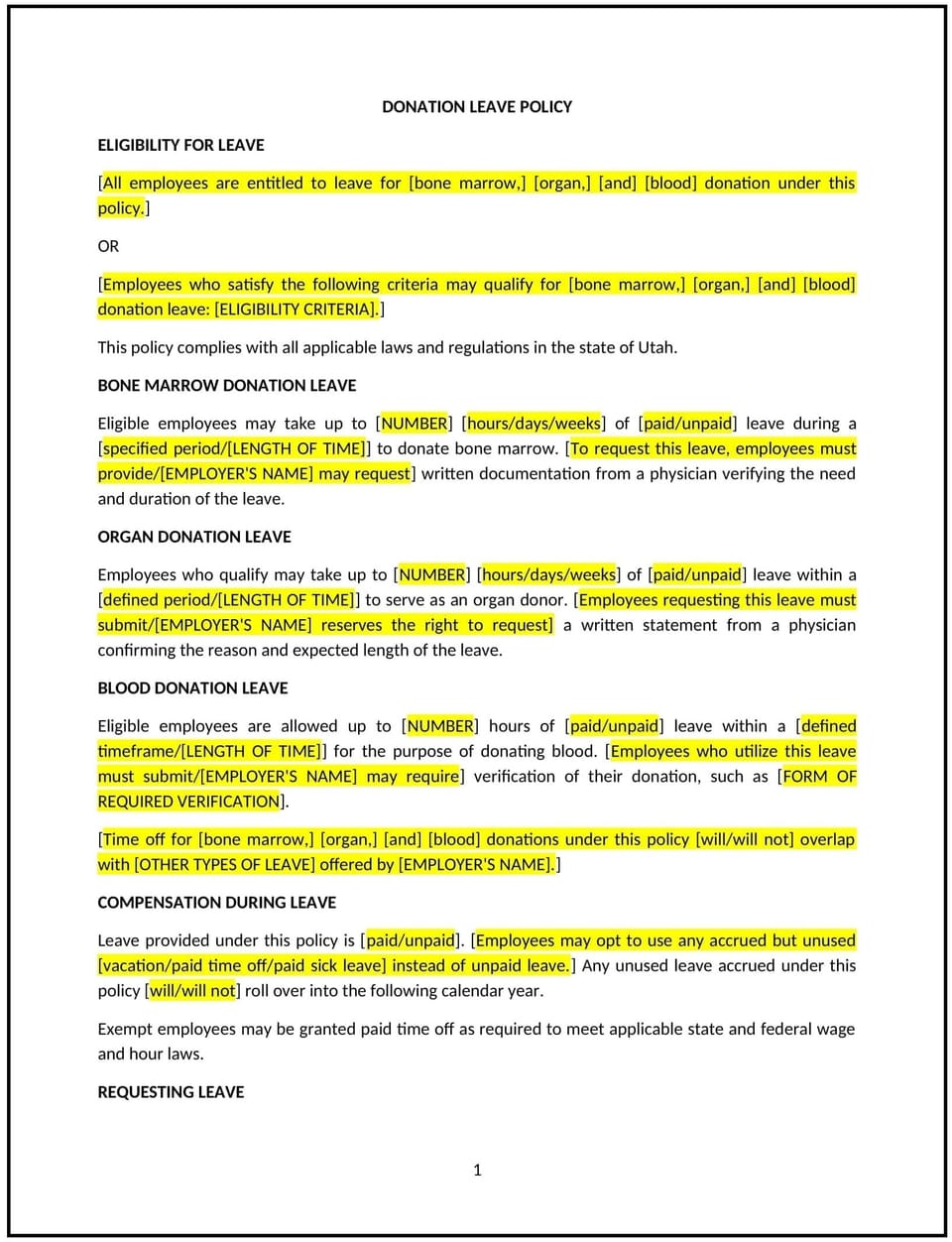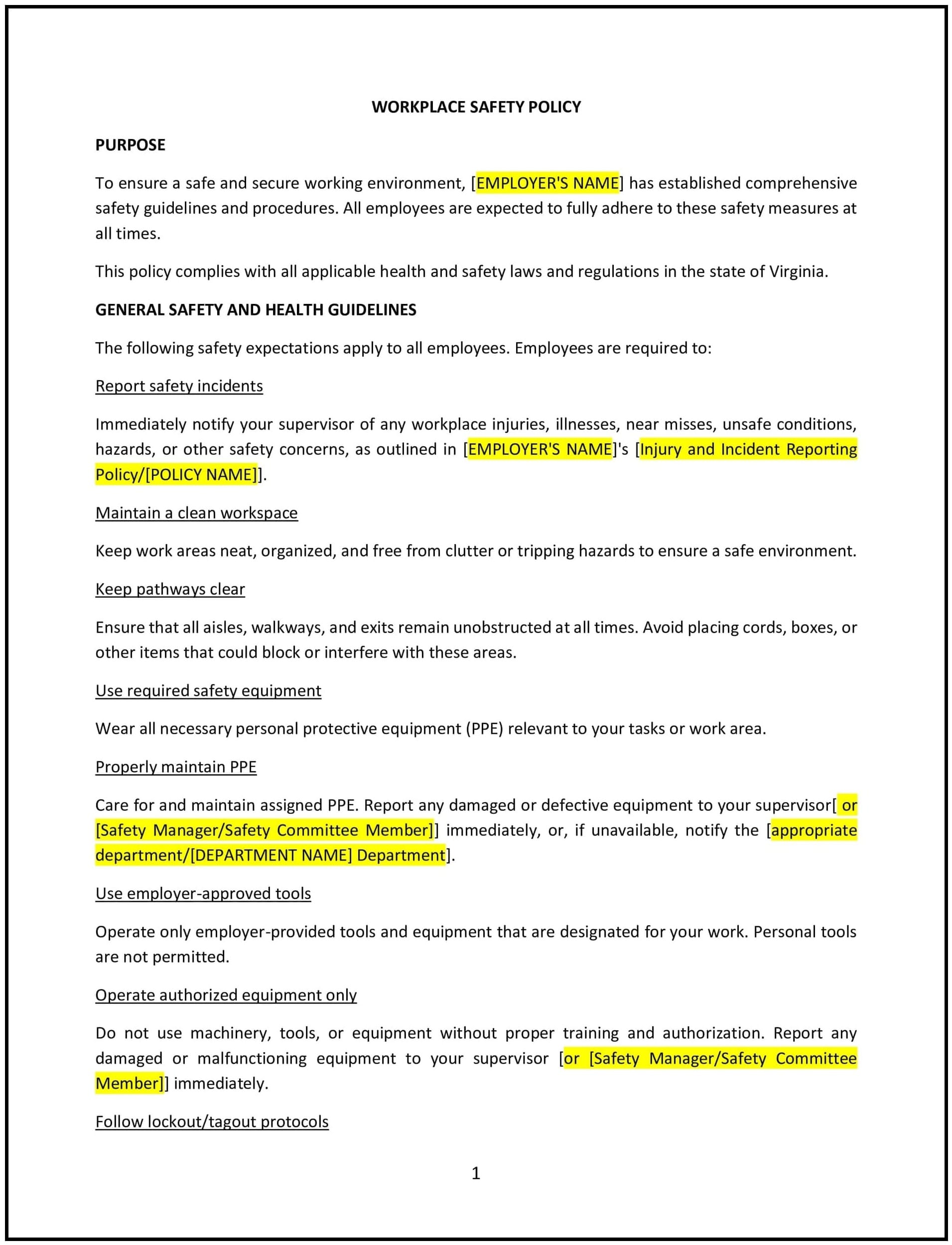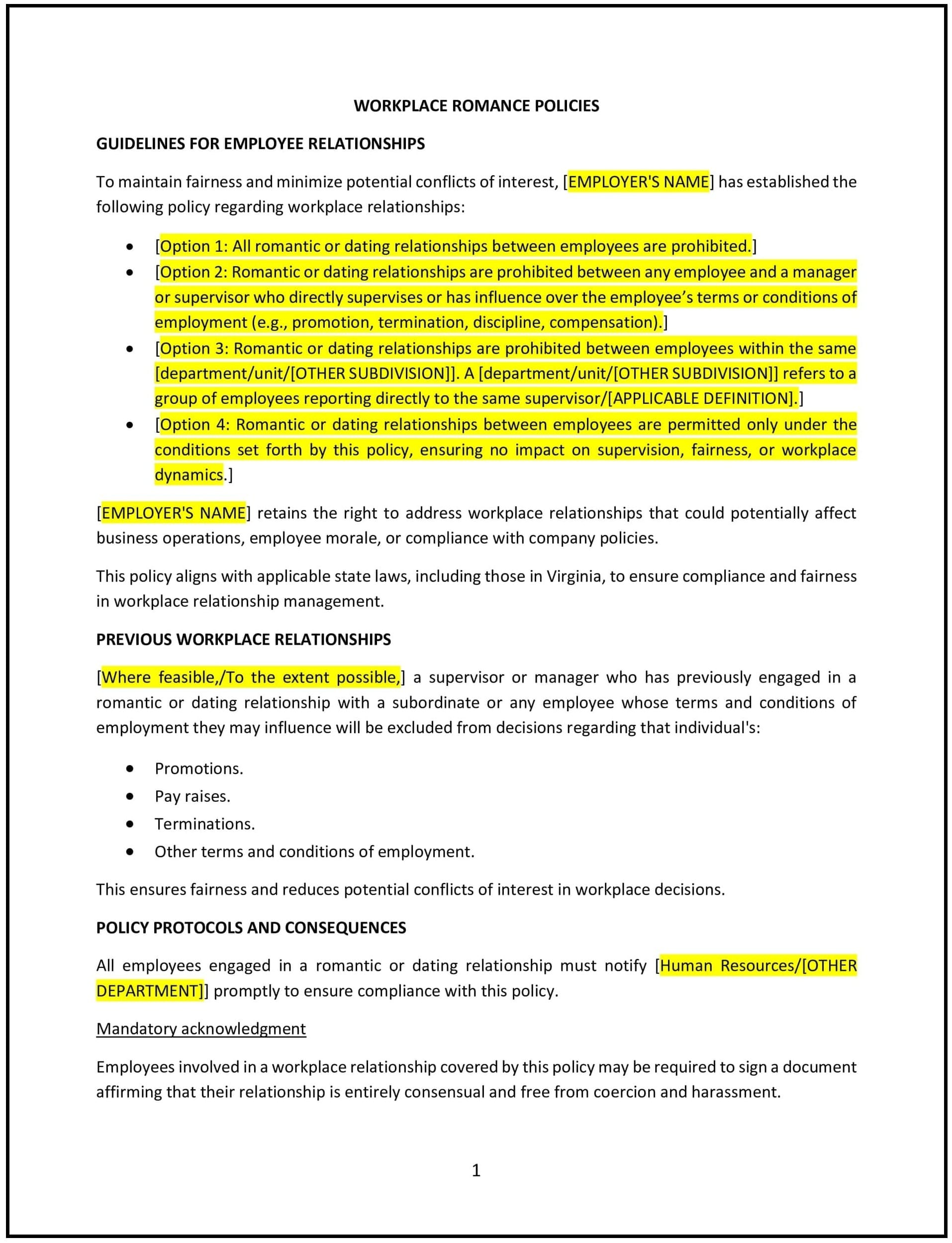Donation leave policy (Utah): Free template

Donation leave policy (Utah)
This donation leave policy is designed to help Utah businesses support employees who wish to donate time, such as volunteer hours or blood donations, to charitable causes. It outlines the types of leave available, eligibility criteria, and procedures for requesting and managing donation leave.
By adopting this policy, businesses can demonstrate social responsibility, support employee well-being, and align with general best practices for workplace flexibility.
How to use this donation leave policy (Utah)
- Define donation leave: Specify the types of leave available, such as volunteer leave or blood donation leave.
- Establish eligibility: Outline which employees are eligible for donation leave, such as full-time or part-time staff.
- Set leave limits: Define the maximum amount of donation leave employees can take per year.
- Outline request procedures: Provide steps for requesting and approving donation leave.
- Promote flexibility: Allow employees to use donation leave for a variety of charitable activities.
- Monitor usage: Track donation leave usage to ensure fairness and adherence to the policy.
- Review and update: Regularly assess the policy to ensure it aligns with employee needs and business goals.
Benefits of using this donation leave policy (Utah)
This policy offers several advantages for Utah businesses:
- Demonstrates social responsibility: Shows a commitment to supporting charitable causes and community initiatives.
- Enhances employee morale: Encourages employees to engage in meaningful activities, boosting job satisfaction.
- Attracts and retains talent: Provides a unique benefit that appeals to socially conscious employees.
- Aligns with best practices: Offers a structured approach to managing donation leave.
- Builds community relationships: Strengthens ties with local organizations and causes.
Tips for using this donation leave policy (Utah)
- Communicate the policy: Share the policy with employees and include it in the employee handbook.
- Provide training: Educate managers on handling donation leave requests and promoting the policy.
- Monitor usage: Track donation leave usage to ensure fairness and adherence to the policy.
- Promote flexibility: Allow employees to use donation leave for a variety of charitable activities.
- Update regularly: Assess the policy annually to ensure it aligns with employee needs and business goals.
Q: How does this policy benefit businesses?
A: By supporting charitable activities, businesses can demonstrate social responsibility, enhance employee morale, and attract socially conscious talent.
Q: What types of donation leave are typically offered?
A: Donation leave may include volunteer leave, blood donation leave, or leave for other charitable activities.
Q: How can businesses ensure fairness in donation leave usage?
A: Businesses should set clear limits on donation leave and monitor usage to ensure all employees have equal opportunities.
Q: Should donation leave be paid or unpaid?
A: This depends on the business’s resources and policies. Paid leave is more supportive but may not be feasible for all businesses.
Q: How often should businesses review this policy?
A: Businesses should review the policy annually or as needed to ensure it aligns with employee needs and business goals.
This article contains general legal information and does not contain legal advice. Cobrief is not a law firm or a substitute for an attorney or law firm. The law is complex and changes often. For legal advice, please ask a lawyer.


